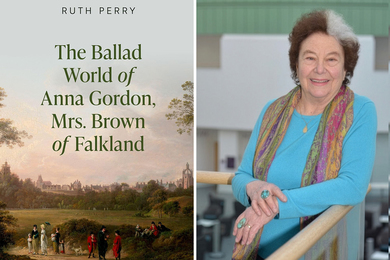President Bush called on fuel makers to produce 35 billion gallons of alternative fuels a year by 2017. That's not going to happen using corn as the basis for ethanol, said Ernest J. Moniz, director of the MIT Energy Initiative.
Moniz, the Cecil and Ida Green Professor of Physics, spoke Wednesday, Jan. 24, at an IAP event on "Energy, Security and Environment."
As part of the broad energy picture facing the United States and the world today, Moniz described the potential consequences of the predicted doubling of energy use in the next half-century. This doubling will take place, he said, even as we continue to improve efficiency.
A lot of the growth will occur in countries with emerging economies, where currently more than a billion people have no access to electricity.
The increased demand for energy will lead to even more concerns about security. "In every projection, dependence on Middle East oil will increase going forward," Moniz said. And oil itself will not go away as a fuel source, although fossil fuels will make up an increasingly small percentage of the overall energy picture.
We need to address energy sources, energy security and climate change to accomplish a "major transformation of the energy system," he said. Behavioral changes, new technologies and government policies will be crucial for a workable solution, he said.
Moniz said that Bush's emphasis on change in the transportation fuels market is reasonable: The market is currently almost entirely dependent on oil. "If we have a more elastic market and more (non-polluting) options for running vehicles," both security and environmental issues will improve, he said.
The environmental imperative is serious. The atmosphere is currently carrying 750 gigatons of carbon and at the current rate of increasing energy use, we will get to atmospheric overload--with alarming consequences--in 50 years. "The bottom line is, simple arithmetic tells you it's a 50-year problem … to look beyond 50 years, you've given up the game on the climate side," Moniz said. "Fifty years is also the timescale for turning over the infrastructure so that we can stay where we are in CO2 emissions while meeting much greater demand."
To do this, a combination of alternative energies will have to be developed. Electricity use in residential and commercial buildings is a big number, so "carbon-free" electricity is a goal. This can be achieved to some extent through burning coal and sequestering the released carbon, nuclear energy and photovoltaics.
The problem is that on a small scale, all these technologies, as well as President Bush's call for ethanol, are attractive and promising. On the large scale necessary to make a dent in energy needs, they get more problematic. Biofuels, for instance, will take a huge number of acres devoted to growing switchgrass or other plants conducive to efficient conversion from cellulose to fuel, plus a lot of water and fertilizer.
"This question of scale is critical," Moniz said. "We each have nice fuzzy technologies we love. It's easy to love them when they're small. It becomes harder to love them when you grow them. When biofuels were small, water supply didn't matter. The same is true of carbon sequestration. There's no silver bullet. We're going to get there only by having a portfolio of fuels, electricity and efficiency."
A version of this article appeared in MIT Tech Talk on February 7, 2007 (download PDF).






